||A|| ||B|| ||C|| ||D|| || Back- India..you must visit ||
 |
H istory: Amaravati is the de facto capital city of the Indian state of Andhra Pradesh. The planned city is located on the southern banks of the Krishna river in Guntur district. It is an important Buddhist site located near the ancient Satavahana capital, Dhanyakataka, is now called Amaravati. It was one of the four renowned Buddhist centers of learning in the country which attracted students from all over the world.This gave fillip to art, trade & spread of Budhism. An emissary of Emperor Ashoka, who went to propagate Buddhism in this region, laid the foundation of the Great Stupa at Amaravati. The dome, now missing, seems to have been built solidly of large-sized bricks measuring 57 x 28 x 7.6 cm. Presently it has a height of about 1.55 m and a diameter of 49.30 m. In original shape the Stupa was the largest marble surfaced dome.Amravati has Budhist Monuments, Excavations and Temples. |
H ow to reach: Can be reached from Vijaywada or Guntur (nearest rail head) by road. |
W here to stay: Many hotels & Guest Houses are located here. |
W hat to see: Amreswar Dham Shiva temple & Budha Stupa. |
| ||India..Places of Interest || |

|
|
H istory :Ahmadabad was founded by pre mughal Sultans in 1411. Unlike Delhi, Kolkata. Chennai or Mumbai which has lot many English buildings there is no evidence of English supremacy here. Old walled city had merchants, weavers and craftmen living in lanes and the same is true even today though the walls are no more there and only gates are visible. |
|
H ow to reach :Ahmedabad is connected with Delhi, Mumbai, Indore and Baroda by Air. Ahmedabad has also few flights to middle east. It is connected with Calcutta, Delhi and Mumbai by trains. By Road it is at a distance of 551 km from Mumbai and at 118 km from Baroda (Vadodara). |
|
W here to stay? :Luxury Cama Hotel,Khanpur , Hotel Natraj,Asram Road, Hotel Karnavati,Asram Road , Hotel Pansikura, Dllisbridge,. Medium: Rivera Hotel, Khanpur Road, Hotel Sidharth Palace,Sahibbag,. Hotel Ahmadabad International Asram Road. Budget : Chandra Guest House, Relief Road. Gandhi Asram Guest House,Asram Road. Evergreen Guest House, Near Ghogha Ghat. W.I.A.A.Rest House, Khanpur Road. Youth Hostel, Gandhinagar. Municipal Vishram Grih, Danapith , Railway Retiring Rooms. |
|
W hat to see? :
|
|
W hat to buy? :Hand painted cloth, Bandhani or tie and dye cloth, Gold embroidery cloth, Handicraft etc. |
| || India..Places of Interest || |
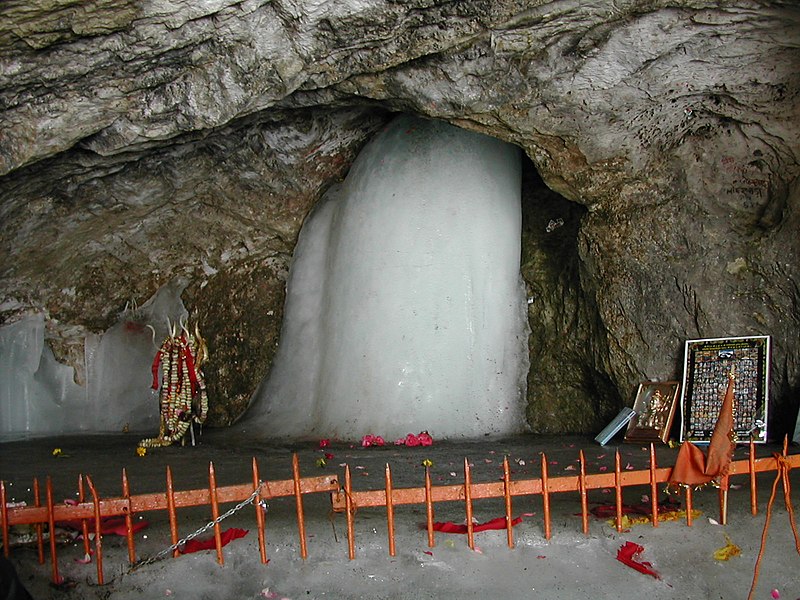 |
| Amarnath is an important pilgrimage destination for Hindus. Shiva Linga of ice/snow appears by itself in a cave. pilgrimage or Yatra is undertaken every year in the Hindu calender month of Shravan (July- Aug) and the government now a days makes elaborate security arrangements for yatris. Location: State : Jammu & Kashmir Situated In Kashmir valley to the north of Anatnag. The base village is Pahalgam. One has to trek 32 km from Chandhanvari (16 km from Pahalgam) to reach the holy cave, the Lord's abode. It is at an altitude of 13500 feet from the mean sea level. |
|
H istory:The holy cave of Amarnath is a shrine of Lingam made of snow. The story narrated by people about the discovery of this Holy Cave is of a Gujjar ( shepherd) Buta Malik . He is given the credit of discovering this Holy Cave . Story goes like this , that a saint gave Buta Malik a bag full of Coal. On reaching his home when he opened the bag , to his utter surprise the bag was full of gold coins . This made him overwelmed with joy. He ran to thank the Saint . But, what he found was that the Saint had disappeared . Instead , he found The Holy Cave and Shiv Lingam there in . He announced the discovery of this to the Villagers. Then onwards this has become the sacred place of Pilgrimage . The ancient epics narrate an other story which goes like this. The valley of Kashmir was under water .It was a big lake. Kashyap Rishi drained the water through number of rivers and rivulets . In those days Bhrigu Rishi came that way on a visit to The Himalyas. He was the first to have Darshans of this Holy Cave . When people heard of the Lingam, Amarnath for them became Shiva’s abode and a Centre of pilgrimage . Since then Lacs of devotees perform the pilgrimage through tough terrain and avail eternal happiness. The trek to Amarnath, in the month of sharavan ( July–August) has the devout flock to this incredible shrine, where the image of Shiva, in the form of a Lingam, is formed naturally of an Ice Stalagmite, which waxes and wanes with the Moon's cycle . By its side are fascinating, two more Ice Lingams, that of Maa Parvati and of their son, Ganesha |
|
H ow to reach?: For performing this Yatra, one is required to get registered . The registration is done by J &K Govt. Tourist Offices, located at Delhi , Mumbai, Calcutta, Chennai, Ahmedabad, Hyderabad, Jammu and Srinagar. Applications for registration should be in the prescribed format. The filled in form should be sent to the registration office nearest to you , along with two passport size photographs duly affixed at the indicated places, a self addressed pre stamped envelope (for speed post) and a medical fitness certificate from an MBBS doctor . Each yatri has to submit a seperate application for registration. Every yatri will be issued a registration-cum-identity slip by the registration authority. Yatris are advised to carry this identity slip during the Yatra period to ensure a smooth passage . Helicopter service is also available. Insurance : In view of the hazardous nature of the Yatra, pilgrims are advised to get themselves insured suitably. It is advisable that insurance cover may be got done before leaving their place of residence. |
|
here to stay?: Accommodation : Charitable organizations provide tented accommodation & Community Kitchen (Langar) to the pilgrims TOTALLY FREE OF COST. Free accommodation is also being provided by other Non Government Charitable Organizations. However, J&K Tourism Development Corporation too provides tented accommodation and shelters at nominal charges. Because of the unpredictable weather conditions, which often are wet and extremely cold during the Yatra period, pilgrims are advised to carry rain coat, woolen clothing, small umbrella (with head elastic band and strap around chin), walking stick , dry fruits, torch and personal medical kits etc. |
|
W hat to see?: On way pilgrims can visit Pahalgam, Chandanwari, Panchtarini, Bal tal, Sonmarg, Srinagar. |
| || India..Places of Interest || |
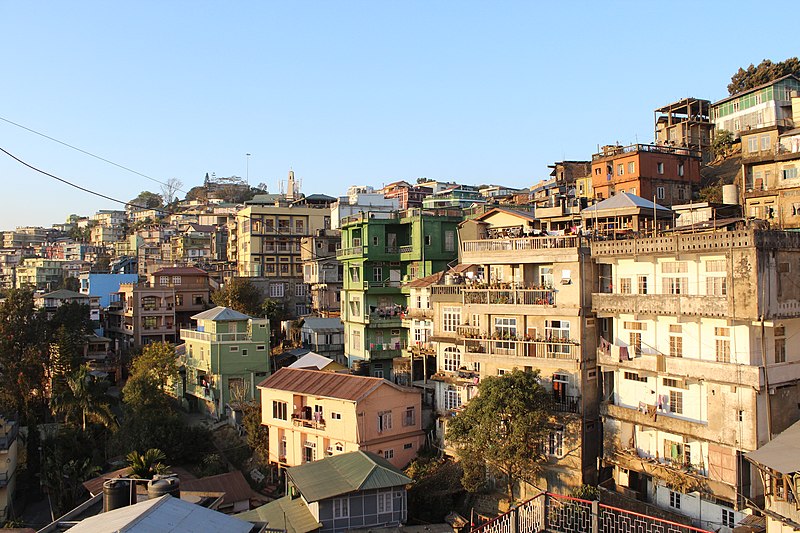 |
|
A izawl is the largest city as well as the capital of the state of Mizoram in India. The City is located north of the Tropic of Cancer in the northern part of Mizoram and is situated on a ridge 1132 meters (3715 ft) above sea level, with the Tlawng river valley to its west and the Tuirial river valley to its east. In the summer the temperature ranges from 20-30 degrees Celsius, and in the winter 11-21 degrees Celsius. C. The place is to be visited for scenic beauty, fruits and handicrafts. The state of Mizoram was earlier called Lusai Hills. Rainy season May to September. Best time to visit October to May. |
|
H istory:Aijal, or more correctly AIZAWL had always been a very favorite village site, but was unoccupied when, in the spring of 1890 Mr. Dally of the Assam Police, arrived there with 400 men of the Silchar Military Police battalion, to co-operate with a column of troops under Col. Skinner, which was struggling down the valley of the Dhaleswari river to punish Lianphunga for raiding the Chittagong Hill Tracts. It was on Mr. Dally’s recommendation that Aijal was chosen as the site of the fortified post which Colonel Skinner had been ordered to construct before he left the country. The site, like all old village sites, was fairly clear of jungle. Lt. Patric of the Bengal Sappers and Miners planned the post, which consisted of two stockades. These were composed to a great extent, of the trees which were common near the site. The stockades and the buildings within them were constructed by Mr. Dally’s men. |
|
H ow to reach?: Nearest Airport Aizwal/ Silchar. Nearest rail head Silchar. Connected with Silchar by State Highway. |
|
W here to stay?: There are several top rated and budget hotels such as Chief, Ritz, Royale, Chaltalang, Chowlnha etc. |
|
W hat to see?: 1. Burra Bazar is the main shopping centre of Aizawal, where Mizorami handicrafts and handlooms articles such as shawls, textiles bags and fine bamboo handiwork are available. 2. The Durtlang Hills lie to the south of Aizwal. Forming a natural barrier, these hills are rugged and have steep, high ridges some of which are inhabited by tiny Mizo hamlets and Christian missions. 3.Luangmual Handicrafts Centre is a must-visit for tourists coming to Aizwal. It sells handicrafts and textiles that are specific to the region. Among its specialties is the famous 'Khumbeu'. 4. Situated in the center of the Aizawl city, this small yet beautiful museum gives a complete insight into the culture and tradition of Mizoram. The tribal attributes of Mizoram are showcased in a separate gallery. 5. One of the most panoramic picnic spots in Aizawl is Paikhai that is just 16 km from the heart of the city. The breathtakingly beautiful views, lush green surroundings and panoramic vistas make it a perfect spot. 6. Known for the 750 feet Vantawang waterfall, highest in the state is about 152 km from Aizawl. The waterfall is set amidst bamboo thickets with lush verdant greenery all around and the Thenzawl hill station is close by. |
| || India..Places of Interest || |
|
AJMER / PUSHKAR |
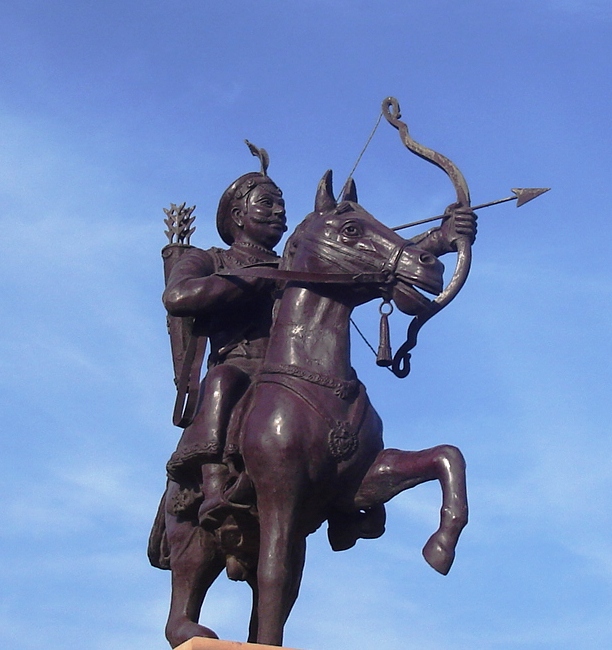  |
|
Ajmer is famous for dargah of Khwaja Moiuddin Chisti. The place is pilgrimage center for Muslims but people of other faiths also come here. it is in the state of Rajasthan on Ahmedabad-Jaipur highway. Puskar 25 km away and Foy Sagar (lake) are the places worth visiting. |
|
H istory:Ajmer is famous for the tomb of Hazrat Moinuddin Chishti, the founder of the Chishti Sufi order, one of the most important Sufi organizations in India and Pakistan. Sufi teachers were important missionaries of Islam, through their piety, charisma, blessings, and service. Moinuddin lived in Ajmer from 1190 until his death in 1232, and the reverence in which he was held after his death can be seen in the patronage his tomb attracted. The "crown" on the tomb's summit is made of solid gold, and the open space in the foreground is a mosque built by the Moghul emperor Shah Jahan. |
|
H ow to reach?: Ajmer Sharif is a city that is situated in the middle of the Indian state of Rajasthan. To reach Ajmer you can come by Rail, Road or by Air. Here are the details of how to reach Ajmer. Road: There are government and private Bus services operating from Delhi, Ahmedabad and other major cities of India. Private Cars are also available on hire. Rail: Many trains from different states of India halt at Ajmer Junction. Air: The nearest International Airport is the Indira Gandhi Airport in New Delhi. Ajmer is only 350 Kilometer’s from here. |
|
W here to stay?: Nice hotels are located in Ajmer some of them are Bijay Niwas Palace, Hotel Vaishali, Hotel Star, Delhi Durbar, Regency, Ambsador etc. |
|
W hat to see?: The Places of Interest in Ajmer are sufficient to attract tourists. In addition to the local attractions the region itself is known for its pictorial beauty. Local transportations are available for the tours within the district of Ajmer. The sightseeing in Ajmer comprise of:-
|
| || India..Places of Interest || |
|
|
|
A gra is a city famous for Tajmahal one of the seven wonders of world. But there are more to Agra then just the Taj. The Taj is miracle enough but Agra has much much more.. |
|
H istory: Early history of Agra is obscure. It was inhibited by Rajputs till the fierce invader Mahmud of Ghazani torched it in 1131 AD. Three centuries later an Afghan called Sikandar lodi established his seat of power here and named it Sikandara. it is at Sikandara that Akbar the great lies buried. |
|
H ow to reach: Agra is connected by Air to Delhi, Khajuraho and Varanasi. It is also connected by train to Delhi, Mumbai (Bombay), Chennai(Madras) and Calcutta. Agra now also boasts of Delhi -Agra Express way now 3-4 hours drive from Delhi-NCR. A deluxe AC train Taj express connects Delhi with Agra. It os 204 km by road from Delhi and is well connected by luxury / tourist buses and luxury taxis. |
|
W here to stay:- Luxury: Mughal Sheraton, Clarke Shiraz, Holiday Inn, Galaxy, Ashok Hotels. Budget: Taj Khema UPTDC's tents and deluxe rooms, UPSTDC tourist Bunglows. |
|
W hat to buy: Handiworks on marble inlays on cigarette and trinket boxes, teak figurines, ivory statues, semi precious stone inlays, leather works, carpets and cotton rugs. Agra is also famous for 'petha or murabba" made from white gourd, Sugar and some times with Saffron. |
|
W hat to see :
|
| || India..Places of Interest || |
|
PRAYAGRAJ( ALLAHABAD) |
 |
| Allahabad is located in the state of Uttar Pradesh and is a sacred place for Hindus also called Prayag. Located here is meeting point or "Sangam" of 3 sacred roves Ganga, Yamuna and the invisible Saraswati. Kumbha Mela a huge religious fair is held here every 12 years. India's first prime minister Pt. Nehru spent his child hood here |
|
H istory: Allahabad is an ancient city of India. Puranas state that Prayag or the ancient city of Prathisthana was ruled by the Chandrawanshi kings. People even ended their lives in this sacred land to attain salvation, a practice that has been testified in the accounts of Chinese traveler Hieun-Tsang who visited this great land in the reign of king Harshavardhana. According to historian Badauni, the great Mughal Emperor Akbar also visited Prayag and founded the imperial city of Illahabad that later on came to be known as Allahabad. The construction of the Akbar Fort bears testimony to the importance of the city that was made the provincial capital during the Mughal period. Even during the British period, the capital of north-west province was shifted to Allahabad from Agra by the then Viceroy Lord Canning. The city not only served as the epicenter of the freedom struggle but continued to shape the destiny of the country even after independence through the various prime ministers who hailed from the city. Puranas pay a glowing tribute to the city of Prayag which is also illustrated in the beautiful verses of the great poet Kalidasa. The famous character of poet in the drama Raghuvansham, speaks of the great line which divided the clear blue stream of The Yamuna from the muddy stream of The Ganga. |
|
H ow to reach?: Allahabad lies on Kolkata (read Howrah) Delhi, Howrah-Bombay, Delhi-Bhopal route of Indian Railways. |
|
W here to stay?: Many hotels are located in this magnificent city such as Shaym, Kanha Shaym, Vaishali,Milan Palace, Yatrik etc. |
|
W hat to see?:
|
| || India..Places of Interest || |
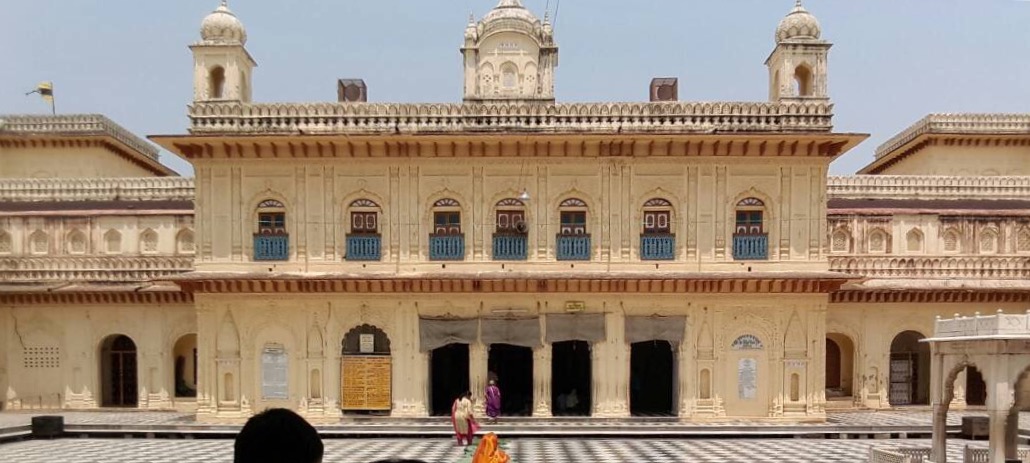 |
|
Ayodhya, birth place of Lord Rama is one of the seven sacred places for Hindus. It is famous for temples. it witnessed demolition of a disputed structure called Babri Masjid-Ram Janm Bhoomi. Faizabad, the district HQ, near Ayodhya is also famous for bangles. |
|
H istory:History of Ayodhya, Uttar Pradesh, India is a fascinating one. According to the ancient history, Ayodhya was one of the holiest cities where the religious faiths of Hinduism, Buddhism, Islam and Jainism united together to build a place of enormous sacred importance. Ayodhya History is a chequered one. In the Atharvaveda, this place was described as a city that was made by gods and was as prosperous as heaven itself. The powerful kingdom of ancient Kosala had Ayodhya as its capital. This city was also a significant trade centre in 600 BC. Historians have identified this place to be Saketa, a key Buddhist centre during the 5th century BC (it is a widely held belief that Buddha visited Ayodhya on several occasions) which it remained till the 5th century AD. In fact, Fa-hien, the Chinese monk, kept record of several Buddhist monasteries that he saw here.Ayodhya has a historical significance for the Jain community too. This is the birth place of two important Jain tirthankaras who were born in the early centuries AD. Jain texts also stand testimony to the visit of Mahavira, Jainism's founder to this city. The 16th century witnessed a shift in power with Ayodhya coming under the rule of the Mughal Empire. Ayodhya was annexed in 1856 by the British rulers. Between 1857 and 1859, this place was one of the main centers where the sparks of the first war of Indian Independence originated. These sparks later led to a nationwide revolt of the Indian soldiers in opposition to the British East India Company that began in Calcutta. |
|
H ow to reach?:
|
|
W here to stay?:
|
|
W hat to see?:
|
| ||India..Places of Interest || |
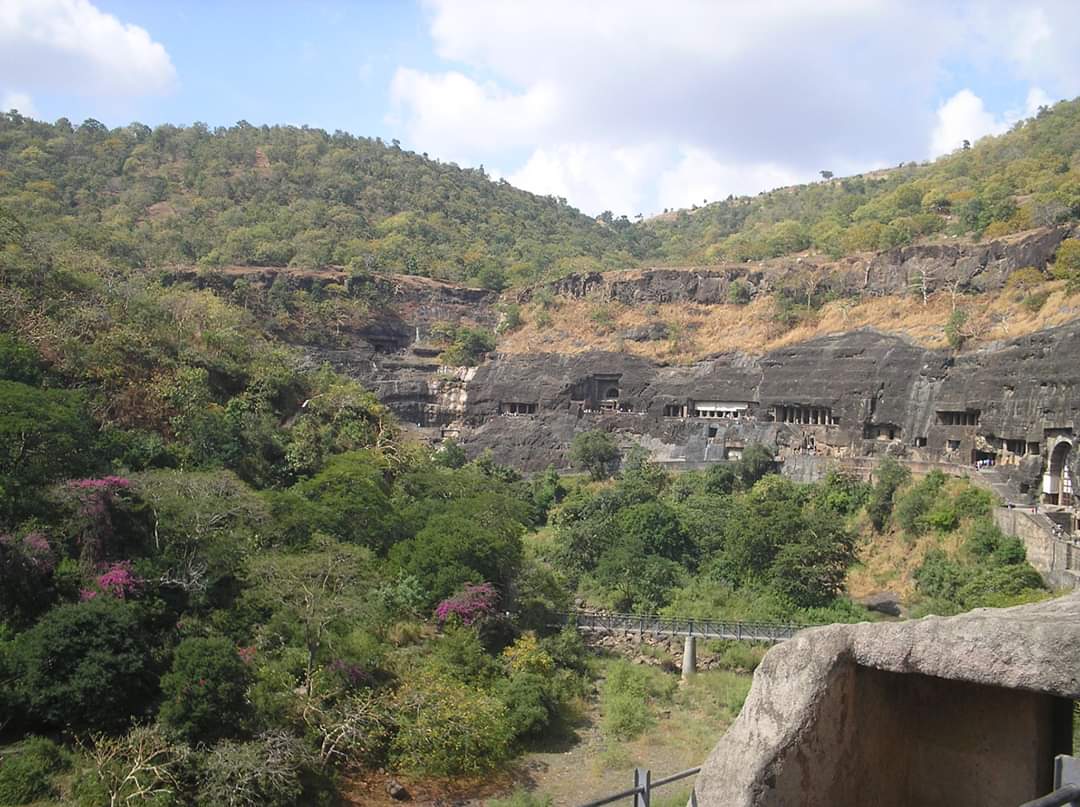 |
|
A janata-Ellora-Aurangabad and Daulatabad makes one tourist axis. The usual halting place for this axis should be Aurangabad, however Jalgaon or Bhusaval could also make be used as night halting place. |
|
H ow to reach: Aurangabad is well connected with Delhi and Bombay by Air. By trains it is connected with Manmad and Secunderabad. Bus from All parts of Maharashtra state (where is this place located) come to this place. Bhusaval and Jalgaon are on train route between Nagpur and Bombay. |
|
W here to stay ? Luxury: Hotel Rama Intrl', Aurangabad, Ajanata Ambassador, Air Port Rd, A'bad, Hotel Aurangabad Ashok, Adalat Rd. Other Hotels : Nandanvan, Printravel,Raviraj,Amarpreet,Neelam,Kartiki,New- Punjab, Tourist Home,Geetanjali GH,Roopmahal GH etc. at Aurangabad and Kailash, Traveller's Bunglow, Khuldabad GH near Ellora and MIDC Treveller's lodge, Holiday Resort, Faradpur, Faradpur GH near Ajanta, Hotel Parkway and Maheshwari Dharmshala ar Paithan. |
W
hat to see ? :
A
ndaman & Nicobar Island Floating in splendid isolation, east of the Indian mainland is the archipelago of 572 emerald islands, islets and rocks known as Andaman & Nicobar Islands. This Union Territory is stretched over an area of more than 700 Km. from north to south with 36 inhabited islands and is divided into two districts - Andaman to the North and Nicobar to the South. The two are separated by about 90 nm of sea – The Ten degrees Channel. These islands are the continuation of the Arakan Yoma mountain range which extends from Myanmar upto Achin Head of Indonesia. These undulating islands are covered with dense forests and endless variety of exotic flowers and birds. The topography of the islands is hilly and abounds in evergreen forests. The sandy beaches on the edge of meandering coastline are fringed with coconut-palms that sway to the rhythm of the sea. The sea around the islands offer excellent scope for water sports. The rare flora and fauna, underwater marine life and corals, with crystal clear water and mangrove-lined creeks, offer a dream-view of the rare gifts of nature. The clean and wide roads, free of filth as well as unpolluted fresh air attract any nature-lover, who seek absolute peace and tranquility in the lap of nature. Adventure tourism like trekking, island camping, snorkeling, scuba diving etc., are the real attractions. A visit to these islands is a memorable lifetime experience. The farthest place from Indian main land i.e. Indira point in Nicobar is around 200 kM from Indonesian Sumatra. Andaman's capital is Port Blair which is well connected with Chennai and Kolkata by regular flights. Ship Service by MV Andamans, MV Harshvardhan also operate from these ports. Good nos. of Hotels i.e. Hotel Bay Islands and GH such as Megapod's Nest are available here.H
istory:Mythologicaly, the name Andaman was presumed to be derived from Hanuman, who was known to the Malays as Handuman. The name Nicobar seems to be a corruption of the South Indian term ‘Nakkavaram’ (Land of the Naked) as indicated in the great Tanjore inscription of AD 1050. Since Prehistoric times, these islands were the home of aboriginal tribes. The tribes of, the Andaman group of islands are the Great Andamanese, Onges, Jarawas, and Sentinatese, all of Negrito origin, while the tribes of Nicobars are the Nicobarese and Shompens, both of Mongoloid stock. The first settlement by the British took place in 1789, which was later abandoned in 1796. The second settlement was basically a penal settlement, taken up in 1858, after the First War of Independence, followed by the settlement of convicts, Moplas, some criminal tribes from Central and United Provinces, refugees from erstwhile East Pakistan, Burma and Sri Lanka as well as ex-servicemen. In these islands people of all faiths - Hindus, Muslims, Christians, Sikhs etc., and of all languages like Hindi, Bengali, Malayalam, Tamil, Telugu, Punjabi, Nicobari etc., live together in complete peace and harmony. Inter-religion and inter-regional marriages are common. This amazing racial and cultural mix is correctly described as Mini-India. Modern history of Andaman Islands can be traced back to 1789 when the Governor General of British India commissioned a survey of these Islands by Lt Archibald Blair, who conducted the first ever topo cum hydrographical survey and reported suitability for human settlement. Immediately thereafter, in 1790 the first settlement was established at Port Blair (then Port Cornwallis) in the present day Chatham Island by bringing hard core criminals from undivided India. However, high mortality due to malaria and frequent attacks by aborigines forced the settlement to be shifted to a new port in North Andaman during 1792. Faced with similar problems, the new settlement was also abandoned in 1796. The missionaries entered Nicobar group of Islands in 17th century. In 1756 the Dutch colonised Nancowry group of Islands and stayed there up to 1787. After several unsuccessful attempts to build up a colony in Nancowry, the Dutch Government ultimately handed over Nicobar group of Islands to the British, who took possession in 1869. Penal Settlement : It was in 1857, after India’s First War of Independence, that a penal colony was attempted at Port Blair with an initial lot of 200 freedom fighter who, for the first time, attempted to over throw British rule in India. The number of freedom fighters increased to 773 within three months.The famous “Battle of Aberdeen” between civilized men and Stone Age aborigines of Andamans was fought on 14th May 1859 at Aberdeen Bazaar. During 1869 – 70 many Wahabi Movement activists who rose against the British rule were deported from the Central and United Provinces of undivided India to Andaman. One amongst them was Mohd. Sher Ali Khan (a Pathan),who assassinated Lord Mayo, the Viceroy and Governor General of India on 08 February 1872 at Hope Town Jetty (now called Panighat). Later,in the same year, Sher Ali Khan was executed in Viper Island by the British. On 13 September 1893, the British Government of India, ordered the construction of a cellular jail to accommodate 600 prisoners. Prior to construction of the Cellular Jail, male convicts were held in a jail on Viper Island and women convicts in South point barracks (near the present day hotel Sinclair). Then occurred the great uprising of moplahs, the Moplah Rebellion during 1921. About 1400 Moplahs mosly from Muslim dominated districts of Ernad, Walluvanad and Calicut of Kerala were sent to Andamns with their families for rebelling against the British rule. Then come Rampa Revolution during 1922 – 24. Aa a result many Rampa revolutionaries were also sent to Andamans. During the 2nd World War the British hastily evacuated and abandoned these Islands in the face of advancing Japanese Forces, allowing Japanese occupation of Andaman and Nicobar Islands. The Japanese brutally ruled the territory for four years from 1942 to 1945. During this period, Japanese took up massive fortification on these islands through construction of airfields (Port Blair, Rutland, Car Nicobar), installation of Radars and guns for air defence networkH
ow to reach?:W
here to stay?: Many hotels apart from Government / Municipal guest houses are located in Andaman & Nicobar Islands such as Welcome Group Bay Island,Sea Shell, Megapod Nest, Andaman Residency, Palm Grove, Hotel Carlo, Sentinel, Peerless Bay Islands, Sinclair Beach Resort etc.W
hat to see?:
B
odh Gaya is the most sacred place for Bhudhists since Lord Budha attained enlightenment here sitting under a Pipal tree. Gaya is sacred to Hindus also as Nirvana and tarpan for the departed souls at the banks of falgu is prescribed in Puranas, the Hindu Holy Book.H
istory: Bodh Gaya is the most holy place for Buddhists. Situated by the bank of river Neranjana the place was then known as Uruwela. King Ashoka was the first to build a temple here.H
ow to reach?:Gaya can be reached by train as it is located on Delhi-Howrah grand chord line. Many important train e.g. Rajdhani and Kalka mail stops here. Regular bus service connects Gaya with Patna. Gaya is also accessible by road from Patna and Ranchi. The nearest airport is at Gaya (16 km) - Druk Air flies from Bangkok once a week. Thai Airways flies to Gaya daily. Indian Airlines flies from Kolkata on Fridays at 10.00 a.m. and Returns back on Mondays from Gaya at around 15.00 hrs. Alternatively, you may take a flight to the Patna Airport (110 km away) or Ranchi (300 km away) and take a train or a taxi to Gaya as Patna / Ranchi has multiple daily direct flights to Delhi, Kolkata and Mumbai. Bodhgaya is approx 8 km from Gaya.W
here to stay?:There are many hotels, dharmashalas and guest houses in Gaya for staying purpose.W
hat to see?:
B
aroda, also called Vadodara is a famous business and industrail center now. However it was a city of Royals with many forts/ places located here. It can be reached by train from Mumbai and Delhi. It is also conneted by Air to Mumbai, Delhi, Ahmedabad and Indore. It has many western and Indian Style Hotels. handicraft and ghaghara choli is the best buy.H
istory: Baroda is also called the cultural and business capital of Gujarat. Baroda or Vadodara was originally Vadapadraka (a village amidst the banyan trees). Historical and archaeological findings date this place back to the 9th century when it was a small town called Ankottaka (present Akota) located on the right bank of the river Vishvamitri. It was flood-pronel; so Vadapadraka became the administrative headquarters. Ankottaka was a famous centre of Jainism in the 5th and 6th century AD. Some of the Akota bronze images can be seen in the Vadodara Museum. The Gaekwads, a Maratha clan who were originally the generals of the Peshwas in Maharashtra, carved out a kingdom for themselves in Baroda. Twenty years later, Damaji's nephew Pilaji became the founder of the house of Gaekwad. Although an English Resident was appointed to the Court of Baroda in 1802, the rulers had a good equation with the British. The wealth of the family is legendary, and stories abound of their priceless jewellery and works of art. The city witnessed a golden age when Maharajah Sayajirao Gaekwad came to the throne in the late 19th century. He brought about many reforms in education, medicine, religious tolerance and administration. Sayajirao was one of the three princes who rated and got a 21gun salute. Maharaja Sayaji Rao Gaekwad III (1875-1939) is a legend; he was the adopted son of Queen Jamnabai. He took Baroda through a golden age with the help of an astute statesman - his chief minister, Diwan Madhav Rao. Sayaji Rao began constructing the Laxmi Vilas Palace, naming it after his first wife (a princess of Tanjore).H
ow to reach?:W
here to stay?: Baroda boasts of many good and budget hotels names of few are Ginger Hotel, Shivshanti, Surya Palace,Rivival Hotels, Welcomegruop Baroda.W
hat to see?: Baroda is a city of gardens and palaces.
B
omdila is connected with Tejpur by road. This can be visited for scenic beauty. Permits may be required. Best time October to May.Bomdila is the headquarters of West Kameng district in the state of Arunachal Pradesh in India. Tourist attractions of Bomdila include Buddhist temples, craft centres, the district museum, a sports complex, trekking, hiking and the Eagle nest Wildlife Sanctuary.H
istory: History The origin of Bomdila is lost in time. It was a part of the kingdom of Tibet in medieval times. Local tribal rulers and rulers from Bhutan generally ruled it from time to time. The Ahom rulers of Assam did not interfere with the local tribes except for retaliatory raids into the tribal territory. The British had declared this area of Arunachal Pradesh as off-limits in 1873. The area has remained a cause of disagreement between India and China since India gained independence in 1947. China invaded the area around Bomdila in 1962, but later withdrew its troops from the area.H
ow to reach?: Connected with Tezpur by Road.W
here to stay?: Hotel Shagrila, Shipyangpong, Hotel, La Hotel, Bamdila Tourist Lodge, Pesang Hotel are few hotels in Bomdila.W
hat to see?: Bomdila offers to the tourist panoramic view of the awesome Himalayan terrain with its snow-covered mountains. It is famous for its apple orchids and travelers can take a walk through them. It also has a couple of Buddhist monasteries or gompas. The area around Bomdila has a number of trekking and hiking trails that attracts the adventure seeker. The small town of Bomdila is perched amongst the panoramic settings of the lofty ranges of the eastern Himalayas. It is a remote destination and like few other Indian towns, it has escaped the virtual tourist invasion in recent times. Bomdila is known for its scenic environs along with its Buddhist monasteries and apple orchids. It also attracts the adventure seeker with its numerous trekking trails. Bomdila is located in the northwestern part of the state of Arunachal Pradesh, in the northeastern region of India. It is set amongst the mighty Himalayas at an altitude of 2,530 m above sea level. The weather in Bomdila is alpine. Summers (April-June) are short and mild, while winters are cold (November-February). It experiences rainfall between July and September.
B
ngalore, once a staid cantonment now it is the capital of Karnataka and a fun city. It has gardens, museums, handi carfts and Palaces. It is an important Metropolis of India with several Industries and is one of the main centre in India for IT industry.H
istory : In the year 1120 AD, the Hoysala King, Veera Ballalla ruled the Deccan plateau or the South of India. On a hunting trip in the forest he lost his way. After a long search he met an old lady in the forest who offered him shelter for the night and served him some boiled beans for dinner. To show his gratitude to this lady for having saved his life, the King constructed a town and named it as Benda Kalooru which means town of boiled beans. Later in 1537, a local chieftain, Kempe Gowda helped design this town and give it its modern shape.H
ow to reach? Bangalore is well connnected with most Major cities in India by Air and is connected with Delhi and Chennai by train. it can be reached by overnight bus journey from Chennai.W
here to stay? Bangalore has many hotels for comfortable stay located in major areas such as Kempegowda circle, MG Road, Residency road etc. Some of the major hotels are Westend, Hotel Ashoka, Hotel Taj Residency, Oberoi, Harsha, Hoyshala, Leila Kempiski, Bangalore International, Hotel park, Hotel Rama etc.W
hat to see?Cubbon park, Lal bagh, Vidhan Sauda, Viswa sariya technical museum, MG road and brigade road bazars, Majestic circle Bazar, race course, bannerghatta etc. are several places worth seeing here. Silk sarees, sandal wood, handicrafts are the best buy.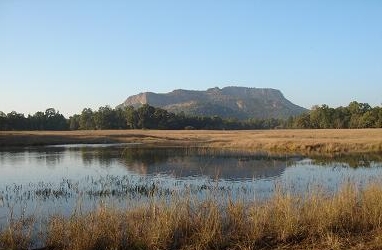
B
andhavgarh is famous for the wild life sanctuary in fact a national park in Madhya Peadesh. It is famous for tigers. Bandhav garh is also famous for its fort. he Bandhavgarh Fort is situated in Bandhavgarh in Umaria district of Madhya PradeshH
istory.Bandhavgarh has a very deep-rooted importance of it's own in the history and mythology of India. Looming high over the entire park and located in the heart of it's core area, is a fort dating back to the mythological era of Rama and Hanuman from the Hindu epic Ramayana. It is said that the two monkeys who created the "setu", or bridge, between India and Lanka to enable Rama to cross over and vanquish the demon king, Rawana, were also the architects of the Bandhavgarh fort. This fort was used by Rama and Hanuman on their journey back to their kingdom from Lanka. This fort was later handed over by Rama to his brother Lakshmana who came to be known as the "Bandhavdhish", lord of the fort.H
ow to reach?By Air: Fly from Delhi, Agra or Varanasi to Khajuraho and drive (7-8 hours) to Tala park entrance at Bandhavgarh.W
here to stay? Many hotels and resorts are located near Bandhavgarh such as Golbro Tiger View Resort, Tiger's Heaven resortl, Maharaja's Royal Retreat, Tiger Den resort and other 20 hotels and resorts.W
hat to see? Main attraction is spotting a tiger other interesting things are Fauna; Flora; Climate; Get around.

B
hopal is a fairy land half hidden among hills and having beautiful lakes. Legendary Raja Bhoj established this city in 11th Century, which is named after him. More ponds, lakes and gardens were added and Bhopal turned into one of the most beautiful cities. Horde of invaders tried to erase Bhopal from earth and Bhopal went into oblivion till extravegent Mughals came and the city was reborn.H
ow to reach? Bhopal is connected with Delhi and Indore by Air and is on the main trunk line of Indian Railways connecting Delhi with Nagpur and South India. Many express trains run between Delhi and Bhopal. Shatabdi express is the best choice from Delhi. Bhopal is well connected with Indore, Sanchi, Mandu and other towns of Madhya Pradesh are well connected with Bhopal by Road.W
here to stay? Western Style Hotels, Indian Style Hotels and Budget Hotel like Mahamaya near Rly Station, Railway retiring rooms.W
hen to Visit? September to March is the best.W
hat to see ? : At BhopalAt Sanchi

B
ombay or Mumbai as it is called today is the financial capital of India. The city originally seven islands is a great metro today. The city was gifted to the Prince of England as part of dowry by the Purtagese.H
ow to reach? Mumbai is well connected within the country and with out side world by air with several flighs per day. It has seperate airports for domestic and international flights. It is well connected to major cities if India through Central and Western Railways. It is well connected by road with Delhi, Calcutta, Pune, Nasik etc.W
here to stay? Plenty of Hotels are available here e.g.Luxury-- Hotel TaJ Mahal: Appolo Bunder, Tel 022-2023366. The Oberoi Nariman Point, Tel 022-202575, Oberoi Towers, Tel 022-2024343. Centaur Hotel, Juhu Beach. tel 022-6126660. Medium-- Citizen, Juhu Beach tel 022-6123790. Diplomat, Colaba, Tel 022-8221311, Bandra Inrn'tl, Tel 022-6402424. Budget :Sea Green South, Marine drive, Tel 022-221613, Sea Green, Marine Drive, Tel 022-222294, Railway Ret. Rooms, Mumbai Central, Tel 022-377292.W
hat to see?BHUBNESHWAR, KONARK, PURI


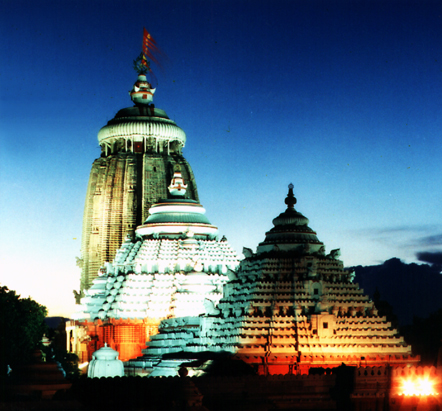
B
hubeshwar is the temple city with 500 temples ranging from 55 m high Lingraj temples to lovely minature ones. It is also the Capital of Orrisa Bhubneshwar is a modern city with lot of ancient temples, caves, stupas around and is the right hub for this circuit of places of tourist interest.H
ow to reach ?. Bhubneshwar is connected by air with Delhi, Calcutta, Nagpur etc. Bhubneshwar is on Kharagpur- Visakhapatanam sector of South Eastern railway and is well connected by road being located on national highway no-5 connecting Calcutta to the South. Puri and Konark can be approached from Bhubneshwar by road. Nearest main rail head for Puri is Khurda Road Jn.W
here to stay: Bhubneshwar.. Hotel Oberoi, Panth Niwas (OTDC) Hotel Kalinga Ashok; Hotel Kenilworth, Hotel Swosti; Hotel Janpath; Yatri Niwas; Hotel Prachi, Meghdoot. At Puri: Hotel Nilanchal Ashok, Puri Hotel, Mahodadhi Niwas, Bay View Hotel. At Konark .. Panth Niwas.W
hat to see ? Around Bhubneshwar ..BADRINATH, KEDARNATH, GANGOTRI



B
drinath, Kedarnath and Gangotri are sacred places for Hindus. While Gangotri is the source point for Holy River Ganga, Badrinath and Kedarnath have temples of Vishnu and Shiva respectively.These places are located in garhwal hills. Badrinath temple, sometimes called Badrinarayan temple, is situated along the Alaknanda river, in the hill town of Badrinath in Uttarakhand state in India. It is widely considered to be one of the holiest Hindu temples, and is dedicated to god Vishnu. The temple and town are one of the four Char Dham and Chota Char Dham pilgrimage sites. It is also one of the 108 Divya Desams, holy shrines for Vaishnavites. The temple is open only six months every year (between the end of April and the beginning of November), due to extreme weather conditions in the Himalayan region.H
istory:Badrinath was originally established as a pilgrimage site by Adi Shankara in the ninth century. Shankara discovered the image of Badrinarayan in the Alaknanda River and enshrined it in a cave near the Tapt Kund hot springs. In the sixteenth century, the king of Garhwal moved the murti to the present temple. The temple has undergone several major renovations, due to age and damage by avalanche. In the 17th century, the temple was expanded by the kings of Garhwal. After significant damage in the great 1803 Himalayan earthquake, it was rebuilt by the King of Jaipur. It is one of the five Punyakshethras (Holy places)where the Hindus offer Shradddhakarmas (oblations) to their line of ancestors (Both from mother's and father's side) (Other four are Kashi, Gaya, Prayaga and Rameswaram). It is believed that once the Shraddha Karma is performed here, the descendants need not perform the yearly ritual. Legend : Badrinath is mentioned in religious texts as far back as the Vedic period. Some accounts claim that the temple was built on a former Buddhist temple site. One legend explains the reason that Vishnu is shown sitting in padmasana, rather than reclining. According to the story, Vishnu was chastised by a sage who saw Vishnu's consort Lakshmi massaging his feet. Vishnu went to Badrinath to perform austerity, meditating for a long time in padmasana.[1] To this day, the area around Badrinath attracts yogis who come for meditation and seclusion. Another legend says that Shiva and Parvati were doing tapas in Badrinath. Vishnu came in disguise as a small boy, crying loudly and disturbing them. Parvati asked the reason for his crying and he replied that he wanted Badrinath for meditation. Shiva and Parvati found that it was Lord Narayan in disguise. They then left Badrinath and moved to Kedarnath. According to the Bhagavata Purana, "There in Badrikashram the Personality of Godhead (Vishnu), in his incarnation as the sages Nara and Narayana, had been undergoing great penance since time immemorial for the welfare of all living entities."[8] The Skanda Purana states that “There are several sacred shrines in heaven, on earth, and in hell; but there is no shrine like Badrinath.” The area around Badrinath was also celebrated in Padma Purana as abounding in spiritual treasures. Badrinath Temple: This temple is one of char dhams place. Dhanu, Sinha and Mesh Rashi person should visit once in life here.H
ow to reach? Nearest rail head for Badri/ Kedar is Kotdwara. Gangotri can also be approached through Rishikesh.W
here to stay ? Apart form Dharamshalas 3 star Hotels eg Hotel Sarover Park Inn and Hotel`are located near the temple.W
hat to see?: There is a very popular shrine of Lord Vishnu, which is said to have been built by Adi Guru Shankaracharya in the early 9th century AD. The place is one of the four pilgrimage center of Garhwal the other three being Kedarnath, Gangotri and Yamunotri. Badrinath is also called the Baikunth Dham or the Heaven on Earth. The entrance of the temple is significant. The gates of the temple are closed from the month of October till April and the idol of Vishnu is shifted to Vasudeva temple at Joshimath. There is a hot water spring, Tapt Kund, near the temple. It has hot water even when it is freezing cold all around the spring is said to cure several diseases naturally by taking a dip in it. The other hot water springs in Badrinath are Narad Kund and Surya Kund. Brahma Kapal is a flat platform on the bank of the river Alaknanda. The people perform the last rites for the departed souls of their relatives on this place. you can visit Sheshnetra, a rock boulder with the impression of the Shesh Nag, the serpent on which Lord Vishnu rests. Charanpaduka is a rock boulder, which is said to be the footprints of Lord Vishnu. There is another important temple dedicated to Lord Badrinath called the Mata Murti Temple. Alaknanda is one of the largest rivers of Garhwal and is equated with the River Ganga in holiness. The origin of the river Alaknanda is from the Glacier Alka Puri, which can be bvisited from this place. Satopanth is a triangular lake and is located at a height of 4402 m from sea level. It is one of the sources of the Alaknanda river.C


W
hat to see ? * Leisure valley * Rock garden * Sukhna lake * Open hand monument * Capitol complex

By Rail: Linked to all major cities and remote areas.
BY ROAD : KOLKATA is connected with Delhi / Chennai/ Mumbai through national highway -2 and 5. In fact the legendary Grand Trunk road of Sher Shah Suri starts from this metro.
WHERE TO STAY : Leading Hotels in the city: Taj Bengal, Hotel Airport Ashok, The Oberoi Grand, Hotel Hindustan International, The Park, Great Eastern Hotel, New Kenilworth International, Fairlawn Hotel, Lytton Hotel. Other Places to stay: A host of Hotels, Guest Houses and Tourist Lodges run by the Government and private bodies.
WHAT TO SEE : Victoria Memorial, Birla Sc Museum, Birla Planetarium, Botanical Garden, BBD Baugh Area, Zoo, National Museum, Kalighat temple, Raj Bhawan, Maidan, Daksineshwar etc.

Chennai - formerly known as Madras, is the capital of the state of Tamil Nadu and is India's fourth largest city. It is located on the Coromandel Coast of the Bay of Bengal. With an estimated population of 7.60 million, the 1400-year-old city is the 36th largest metropolitan area in the world. Chennai boasts of a long history from ancient South Indian empires through colonialism to its evolution in the 20th century as a services and manufacturing hub.
H
istory:The region of Chennai was called Tondaimandalm in those days and had its military headquarters at Puzhal, which is now a small and rather insignificant village on the outskirts of the city. Modern Chennai grew out of a small village when in 1639 a fishing hamlet called Madraspatnam was selected by early English merchants of the East India Company as a site for the settlement. Founded in 1639 on land given by the Raja of Chandragiri, the last representative of the Vijayanagar rulers of Hampi. A small fort was built at a fishing settlement in 1644 and a town, which subsequently became to known as George Town, which grew in the area of fort St. George. The settlement became independent of Banten, Java, in 1683 and was granted its first municipal charter in 1688 by James II. It thus has the oldest municipal corporation in India, a fact which Tamil Nadu state governors are only too keen to point out at every available opportunity. During the 18th and early 19th centuries, when the British and French competed for supremacy in India, the city's fortunes waxed and waned. It was briefly occupied by the French on one occasion. It was used by Clive of India as a base for his military expeditions during the Wars of the Carnatic and, during the 19th century, it was the seat of the Chennai Presidency, one of the four divisions of British Imperial India. After independence the city continued to be known by the name Madras until the government of Tamilnadu under the chief minister Mr. M. K. Karunanidi officially converted it to Chennai in 1997. other major metros of India, it is far less congested and polluted.H
ow to reach?: Chennai is well connected with rest of India by Rail / road and by Air to all major cities of India and to other neighbouring countries.W
here to stay?: There are many budget and luxury and 5 star deluxe hotels in Chennai all over the city. Most budget hotels are located near Chennai central and Chennai egmore stations. Name of some hotels are Connemara, Park, Ambassador, Taj Coromondel, Taj Sheraton Chola, Radisson, Ramda, Palm Grove, President, Sulekha, Abu Palace, Kanchi, Mallika, Ranjith, MGM Grand, Trident etc.W
hat to see?: Arignar Anna Zoological Park, Ashtalakshmi Temple, Besant Nagar Church, City Center, Dakshinchitra, Elliots Beach, Government Museum, Marina Beach, Ramakrishna Matt, Spencer Plaza, Theosophical Society, Anjaneyar Temple, Anna Square, Annanagar Tower, Birla Planetarium, Chennai Port, Childrens Park, Gandhi Mandapam, George Town, Kalakshetra, Kapaleeshwarar Temple, Mayajaal, Music Academy, Parrys Corner, Parthasarathy Temple, Santhome Beach, Santhome Church, St.George Fort, Mount Road, T Nagar, Triplicane Mosque, Valluvar Kottam, Venkateswara Tower, Victory War Memorial, Mayalapore Sai baba temple etc.

H
istory. The early history of Cochin is shrouded in obscurity. Inscriptions and literary works give us the names of some of the early rulers of the illustrious dynasty whom once ruled Cochin. Unni Rama Koil I, was the ruler of Cochin when the Portuguese captain Cabral, landed in Cochin. Under him the trade facilities were granted to the Portuguese and a good relationship was established. Under Unni Rama Koil II, the friendship with the Portuguese was strengthened and Cochin rose to political prominence. Vira Kerala Varma, the next ruler, kept friendly relations with the Portuguese, but the plunder of the temple of Palluruthi imposed a heavy strain on their relations. It was during his reign that the war with the Vadakkumkur took place. It was to Vira Kerala Varma that the Portugese presented the palace newly built by them at Mattancherryin 1555 A.D. The dynasty that ruled Cochin was 'Perumpadappu Swarupam' because Cochin was that part of Kerala which came under the eldest son of Cheraman Perumal's sister by Perumpadappu Nambudiri.H
ow to reach? By Air : Cochin is connected by excellent air network to all major cities in India. Cochin also has an international terminal. Rail Cochin is also well connected with all the major places in Kerala and India by Rail network. Cochin has three main railway stations, namely, Ernakulam Junction, Ernakulam Town and Harbor Terminus on Willingdon Island. Road Cochin, being an important commercial center of Kerala is very well connected and serviced by a network of National and state highways, connecting it to all major centers of the area.W
here to stay? There are many hotels and resorts in this area such as Abad, Old Courtyard Hotel, Hotel Arches, Taj Malabar, Trident etc.W
hat to see?
C
orbette national park is the first national park in India established in 1935. This is one the finest habitats for tigers. Located in the state of Uttar Pradesh, this abounds with the animals of Himalyas and the peninsular India.H
ow to reach?: Nearest rail head is Ramnagar which is 50 kM from Dhikala. Dhikala is connected by road to Delhi-290 km. Coaches ans Jeeps can be hired from Ramnagar. Elephants are available for wild life viewing at Dhikala, Khinnauli and Bijrani. Package tours are available from Delhi on Fri, Sun and Tuesdays during season.W
here to stay ?: Corbette Ramganga Resort. Orange Country Resort- Sidpur, Quality Inn Corbette Jungle Resort, Shergaon Tiger Village, Ramnagar,Hideaway, Forest RH, Dhikala, Cabins, Dhikala, Forest RHouses at`Sardpuli,Gairal,Sultan,Bijrani, Malani, Kanda, Dhela, Jhirna, Tourist Banglow, Ramnagar.D

H
istory. Dispur, the capital city of north-eastern state of Assam is also the main suburb of the city of Guwahati. With the birth of a new separate state of Meghalaya in 1975, the capital had been shifted from Shillong to Dispur. A small city with a population of around two thousand, Dispur is the central point to the state of Assam and has a lot to offer in sightseeing for common tourists and nature enthusiast. Dispur is a well-planned city and bestowed with natural wonders like hills, grassy countryside and pollution free environment that enthrall the tourists a lot. Nature has also blessed the city with bushy forests and the shimmering rivers. Dispur is also a major producer of the tea.H
ow to reach?By Train : Guwahati railway station is the major railhead, which is also the headquarters of the North-East Frontier Railway. A number of mails, express and superfast trains are available to Guwahati from rest of the country. Auto-rickshaws and taxis ply from the railway station to various parts of the city. By Road : National Highways 31, 37, 40 and 52 connect Dispur with the other cities of India. State Transport buses of Assam government and private buses ply from Dispur to other cities of North-eastern India. Distances of some of important places from Dispur are : Shillong (110 km), Tura (185 km) and Tezpur (191 km).W
here to stay?Plenty of accommodation options are available in Dispur, ranging from deluxe to budget hotels. Most popular hotels include Hotel Brahmputra Ashok, Hotel Belle Vue, Hotel Landmark, Hotel Dynasty, Hotel Raj Mahal, Hotel Nandan and Hotel Vishwaratna.W
hat to see?Dispur is a famous place for tourists, who visit the city to see the lifestyle of tribal and unconnected people. The mighty Brahmaputra river which flows through the city is a major attraction and known for its pristine beauty, fast current and thrilling rapids. Tea is another highlight of Dispur, in fact, a visitor to the city leave with at least a classic Dispur city made tea bag.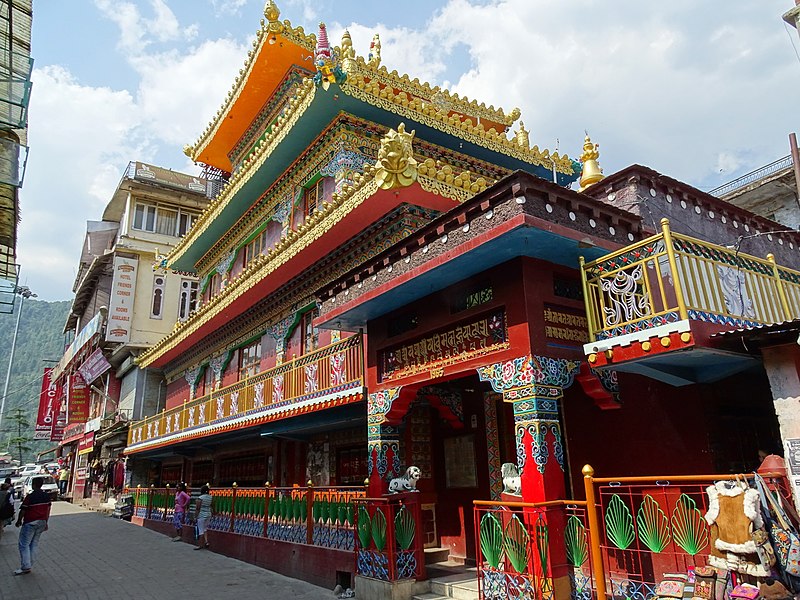
H
istory: Dalhousie is a beautiful hill station in Himanchal Pradesh. Established in 1854 by the British Empire in India as a summer retreat for its troops and bureaucrats, the town was named after Lord Dalhousie who was the British viceroy in India at that time. It is built on and around five hills. Located on the western edge of the Dhauladhar mountain range of the Himalayas, it is surrounded by the beautiful scenery of snow-capped peaks. Dalhousie is situated between 6,000 and 9,000 feet above sea level. The best time to visit is in the summer, and the peak tourist season is from May to September. Scottish and Victorian architecture is prevalent in the bungalows and churches in the town.` Dalhousie is a gateway to the ancient Chamba Hill State, now Chamba District of the state of Himachal Pradesh of India. This hill region is a repository of ancient Hindu culture, art, temples, and handicrafts preserved under the longest-running single dynasty since the mid-6th century. Chamba is the hub of this culture. Bharmour, the ancient capital of this kingdom, is home to the Gaddi and Gujjar tribes and has 84 ancient temples dating from the 7th–10th century AD. Weather It is usually warm in the morning and afternoon in June–July and gets cold early in the evening and quite cold at night. The weather becomes very cold if it rains and during winter. Dharmshala is the winter seat of government of the state of Himachal Pradesh and the district headquarters of the Kangra district. Mcleod Ganj, a village within Dharamshala municipality, is the home of the Dalai Lama and the exiled Tibetan government.H
ow to reach? Pathankot in the north of Punjab state is known as the gateway to Dalhousie and Dharmsala. This is because both railway and roadways services are available from Pathankot while going to Dalhousie / Dharmsala. Whereas people who wish to travel by air while going to Dalhousie have to come to any of the three airports of Gaggal in Himachal Pradesh, Jammu and Kashmir or Amritsar. Since Dalhousie is just 80 km away from Pathankot and the latter is linked to Bangalore, Chennai, Kolkata, Bombay and Delhi, one can also avail of train services to reach the hilly destination. Newly upgraded Gaggal Airport (IATA: DHM) in Kangra, 10 km away, has flights from Delhi on Air Deccan (daily via Pathankot) and Jagson Airlines [2] (three times weekly via Kullu). Flights are prone to cancellation due to bad weather or because enough passengers didn't show up, so leave some leeway for onward connections on the way out. Visiting Dalhousie by road also requires the tourists to pass through Pathankot as from here one can get taxis and buses that ply between the two places regularly. The comfortable accessibility to Dalhousie has made the place a favorite tourist spot of Himachal Pradesh today. In fact those who have never been to this hilly terrain of Himachal Pradesh are keen enough to view the appeals of the place too.W
here to stay? Many hotels are there in this area. Dharmsala : Hotel Anand Palace, Hotel Eagle's nest, Hotel Sahil Plaza, Hotel Spring Valley. Dalhousie area : Hotel Mountain View, Youth Hostel etc.W
hat to see?
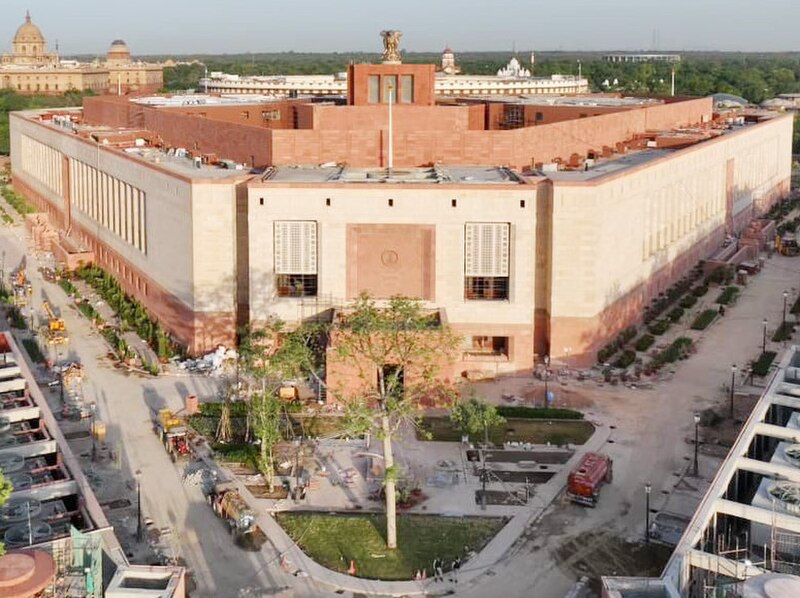

H
istory: The Indian capital city of Delhi has a long history, including a history as the capital of several empires. The earliest architectural relics date back to the Maurya Period (c. 300 BC); since then, the site has seen continuous settlement. In 1966, an inscription of the Mauryan Emperor Ashoka (273-236 BC) was discovered near Srinivaspuri, which is near Noida. Two sandstone pillars inscribed with the edicts of Ashoka were brought to the city by Firuz Shah Tughluq in the 14th century. The famous Iron pillar near the Qutub Minar was commissioned by the emperor Kumara Gupta I of the Gupta dynasty (320-540) and transplanted to Delhi during the 10th century. Eight major cities have been situated in the Delhi area. The first four cities were in the southern part of present-day Delhi.H
ow to reach? Delhi is well connected with all international and intra-national destinations by Air, Train and Raod. Capital of all most all Indian states are connected by Rajdhani Express - a luxury train with all air-condtioned coaches and with catering services as part of the train ticket. Terminal-3 of India Gandhi International Airport is presently rated as sixtth largest airport in the world.W
here to stay? There are many luxury and budget hotels in Delhi. To name a few : Hotel Le Meridian, Hotel Ashoka, Hotel Janpath, Intercontinental Hotel, Hotel Hans Plaza, Hotel Taj Palace, Hotel Crowne Plaza, Hotel, Hotel Prominent etc. many Budget hotels are located in Pahargunj area near to New Delhi Stations.W
hat to see?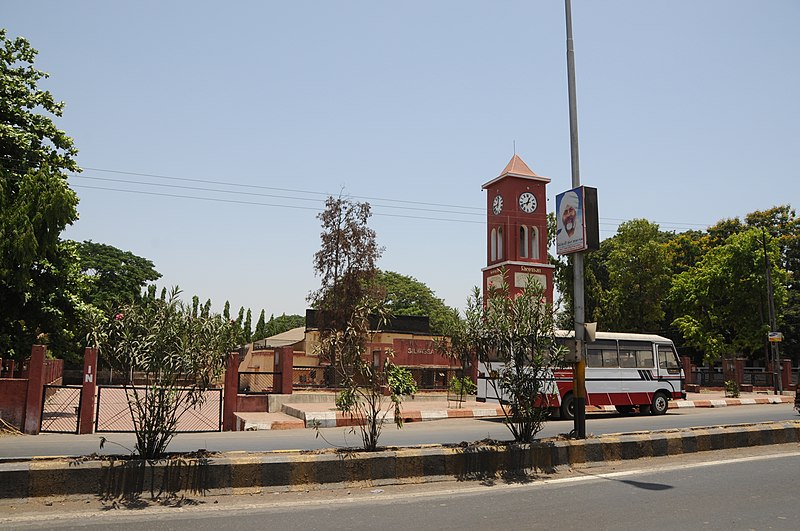
H
istory: These area were part of Portuguese occupations in Goa.H
ow to reach? By road, Dadra and Nagar Haveli , almost touches the Bombay - Baroda - Delhi National Highway No.8 (Western Express Highway). Nearest Rail head is Vapi on Mumbai- Varodara route.W
here to stay? Khanvel Resort, Ras-Resort, Pioneer Hotel are few hotels in Silvassa.W
hat to see? Silvassa City, Hirwan Garden, Vanganga Lake Garden, Tribal Museum, Tapovan Tourist Complex, Himaivan Health Resort,Vanvihar Tourist Complex,Tadkeshwara Temple.
D
ehradun is nesteled in the valley of the Shivalik Range and known for its salubrious climate and orchards. Its is famous for its public schools and proximity of Mussoorie is added advantage. Deharadun is capital of State of Uttarakhand, India.H
ow to reach? : Major trains are Shatabdi Exp; Mussoorie EXp, Howrah- Dehradoon Exp, Mumbai-Dehradoon Exp, Ujjaini Exp. UP State Road Transport Corpn runs service from Delhi ISBT. Mussoorie which is 38 kM away is well connected with Dehradun and Buses and Taxis ply between them.W
here to stay? : Hotel Madhuban *** , Hotel President **, Hotel Relax **, Aketa, Ambassador, Atithi, Ajanta, Hilton, Lalit palace, Osho Resorts,.At Mussoorie: Claridges Coonaught castle. Caridges Nabha Resort. Classic Heights, Cannaught Castle, Country Inn, Hakmans Grand Hotel Tel 2632559. Valley View Hotel.W
hat to see? : At Dehradun
H
istory: The history of Darjeeling covers the history of a town in the state of West Bengal in the Mahabharat Range (or Lesser Himalayas), intertwined with the history of Bengal, Nepal, Bhutan, Sikkim, and Great Britain by the British East India Company. Originally part of the state of Sikkim, Darjeeling became part of an important buffer state between Nepal and Bhutan. British troops, using the area as a sanitarium, found that the climate provided excellent cultivating conditions and soon began to grow tea crops on the hills of the city. Darjeeling tea stands as a famous export from the city until this day. Kalimpong is a hill station in the Mahabharat Range (or Lesser Himalaya) in the state of West Bengal. It is located at an average elevation of 1,250 metres (4,101 ft). The town is the headquarters of the Kalimpong subdivision, a part of the district of Darjeeling. The Indian Army's 27 Mountain Division is located on the outskirts of the town. Kalimpong is known for its educational institutions many of which were established during the British colonial period. It used to be a gateway in the trade between Tibet and India prior to China's annexation of Tibet and the Sino-Indian War. Kalimpong and neighbouring Darjeeling were major centres calling for a separate Gorkhaland state in the 1980s.H
ow to reach? The nearest airport is Bagdogra near Siliguri. Area is welconnected with rest of the country by National Highway- NH-31. A Narrow Gauge train - also called toy train runs between Siliguri and Darjeeling.W
here to stay? Kalimpong : Sood's Garden Resort, Alaknanda GH, Hotel Garden Reach, Hotel Chimal, Hotel Tripti. Darjeeling : Hotel SangriLa, Hotel Seven Sventeen, Hotel Elgin, Hotel Bellviue, Hotel Snowlion HomeStay, Hotel Vice Roy etc.W
hat to see?